On April 9th, 1940, Hitler unleashed his military machine on Norway, breaking that country's neutrality and overwhelming the unprepared defenders at cities including Oslo, Kristiansand, Stavangar and Bergen using troops carried aboard warships. Offshore, the British fleet was in the North Sea, but they had missed even the task forces headed for the northernmost cities, such as Trondheim.
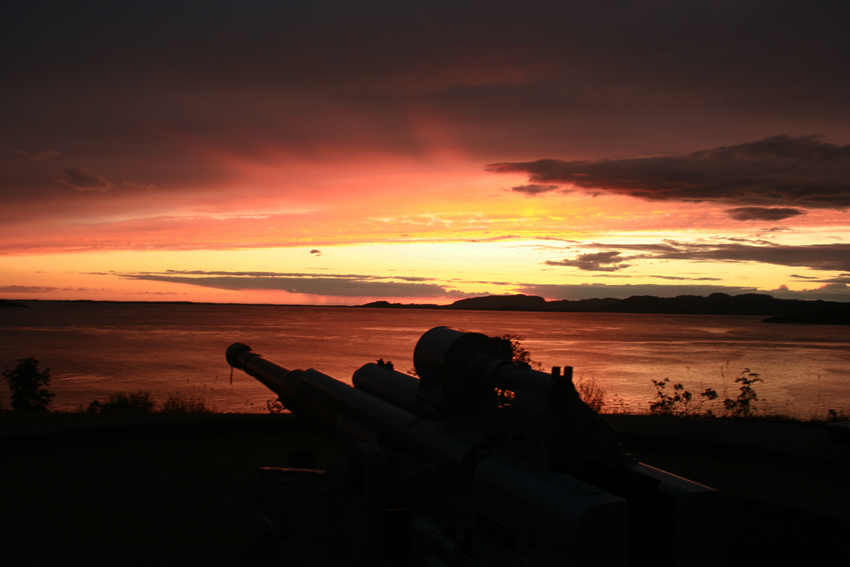
The view from Hysnes Fort, guarding Trondheim
Trondheim was one of Norway's most strategic cities, where a number of roads from the south converged and the single road that led into the narrow coastal strip of northern Norway began. Three forts guarded the entrance to Trondheimsfjord, equipped with a total of 4 21 cm and 7 15 cm guns, although they were lightly manned, with only one of the 15 cm weapons crewed around the clock. The command at Trondheim was no more alert than their counterparts to the south, and the warnings passed to the commands further south on April 8th and into the early hours of the 9th were taken as confirmation that Trondheim was under no threat.
Sadly for them, this was not true. Heavy cruiser Admiral Hipper and four destroyers, all loaded with Austrian mountain troops, arrived at the outlying islands just before midnight on the 9th, and unlike the ships further south, they were able to take advantage of the standard navigation lights, which had not been doused. This was particularly helpful in the narrow, island-studded waters off Trondheim, and they soon encountered the auxiliary Fosen, patrolling in the entrance to Trondheimsfjord. Hipper claimed to be battleship HMS Revenge, but as usual the Norwegians didn't pick up the signals and correctly evaluated them as hostile, even if they weren't sure whose ships they were. The commander of the fortifications was at home, and quickly telephoned the team at the batteries to open fire on the intruders.
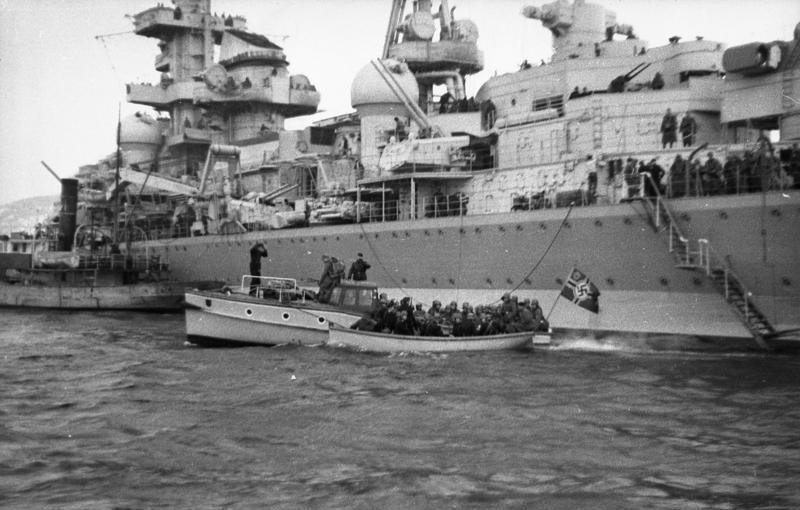
Hipper unloads troops in Trondheim
At the outer fort, Brettingen, the crew on duty was mostly moving ammo from the magazine to the guns, and it took 15 minutes before they could open fire. Hipper was past, and the guns, 2 21 cm and 3 15 cm, were trained on the destroyers. The first salvo landed close to one of the destroyers, but Hipper quickly turned her searchlight on the fort, blinding the crews. Hipper's contribution wasn't limited to lights, either, as two salvoes from her aft guns severed the electrical cables, plunging the battery into darkness. This also cut power to the second fort, at Hysnes, and between the loss of power and German searchlights, the gunners didn't fire at all. Hipper and one of the destroyers headed onward to Trondheim, anchoring at 0425. Half an hour later, the first mountain troops were ashore, and the entire town was secured by midday.
The other three destroyers had been detailed to secure the forts, and they quickly spread out to send their troops ashore. Riedel, landing a company to capture Brettingen and Hysnes, damaged her bottom on a rock. Jacobi, meanwhile, unloaded her men near the unmanned fort at Hambara. This left her in clear view of Brettingen and Hysnes, although it took quite a while to get permission to open fire, and none of the four salvos from the 21 cm guns actually hit. But while none of the German vessels were damaged by the Norwegian artillery, the defenders of the forts did put up a fight. Kapetin Lange, commander at Hysnes, gathered 25 men, mostly from his AA unit, and took up position on a hill south of the fort. They were able to push back the initial attack by the soldiers from Riedel, and retreated only over Lange's protest on orders from his commander, slowly falling back on the fort. For five hours they fought back, finally surrendering when they ran low on ammunition. 22 Germans had been killed in the action at a cost of two Norwegians wounded, although the forts fell intact into German hands.

A destroyer in Trondheim harbor
The German occupation of Trondheim was peaceful, as the Norwegian troops in the area retreated to set up defenses inland. The biggest problem for the Germans was lack of supplies. Only one of the five merchant ships that had been dispatched with supplies for Trondheim actually turned up, and that several days late. Because Trondheim was so exposed to the British, sending more ships was perilous, and an airlift was out because a small group of Norwegians held the nearby airfield until the morning of the 10th, and it turned out to be in bad shape when they were finally driven off. The burden of supplying the beachhead was borne by U-boats until the airfield was repaired.
The lack of the supply ships was a serious problem for the warships. They were unwilling to leave Hipper in such an exposed position, but she barely had enough fuel to make it home, and the destroyers were in even worse shape. The plan was to transfer fuel into Eckholdt from Jacobi and Heinemann, and send her home with Hipper. Thanks to the damage she hand taken, Riedel was to be grounded on a sandbar as a stationary gun and torpedo battery. On the evening of April 10th, Hipper and Eckholdt headed up the fjord. Even before they reached the open sea, they saw a surfaced submarine, and opened fire. It was U-30, and fortunately for everyone involved, the U-boat managed to dive without injury. The Germans were spooked, and Hipper and her consort turned back, sortieing later that night through a different route back to the open sea. Shortly after clearing the Norwegian coast, Eckholdt signaled that she was unable to keep up with the cruiser and turned back, leaving Hipper to proceed alone.
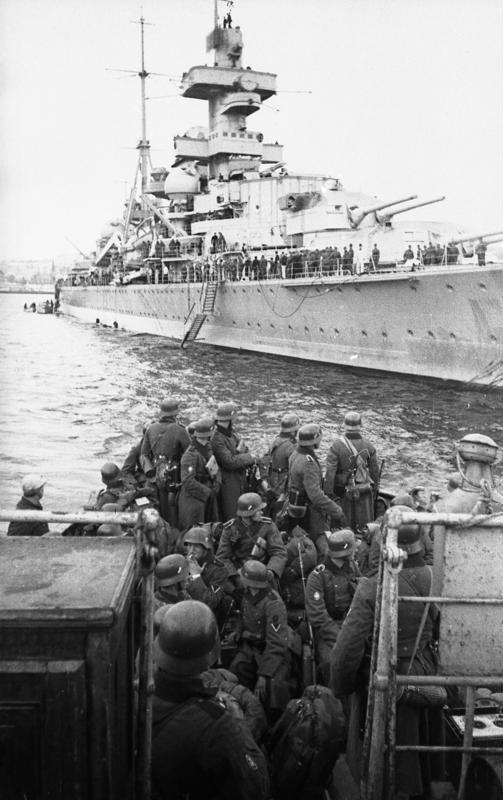
Hipper in Trondheim, with damage from Glowworm visible on her bow
Dawn on the 11th was tense for the men aboard Hipper. The British were in the North Sea in force, with at least one carrier. That evening, the weather worsened, and Hipper maintained 29 kts despite having to evacuate the decks forward due to rough seas. The storm covered her from the British aircraft searching for her, and she met up with the battleships only a few hours out from Wilhelmshaven. When she docked at 1100 on the 12th, her bunkers contained only 120 m3 of fuel oil, 5% of what she had carried when she sailed. Inspection showed that while the collision with Glowworm had messed up the shell plating, the armored belt had contained the damage, and repairs took only two weeks.
She had escaped just in time. After the air attack off Bergen, the Home Fleet had moved north, preparing to strike Trondheim with aircraft from Furious, recently added to the force. Her Swordfish arrived over the city early on the 11th, and nine of them attacked Ridel. They were astonished to see the tracks of their torpedoes end several hundred yards short of the destroyer, as they struck the sandbank she was grounded on. Eight others went after Eckholdt, but two torpedoes failed to run and the destroyer dodged the other six. Lastly, two of the Swordfish bombed Norwegian minelayer Froya, anchored nearby. She was trapped by the German-manned defenses and ultimately forced to scuttle on the 13th. Also scuttled was torpedo boat Laks, in the yard in Trondheim. Her captain and crew had secretly made her ready for sea on the 10th, but their hopes of torpedoing Hipper were dashed when she departed, and they chose to scuttle before realizing that the destroyers would be returning.
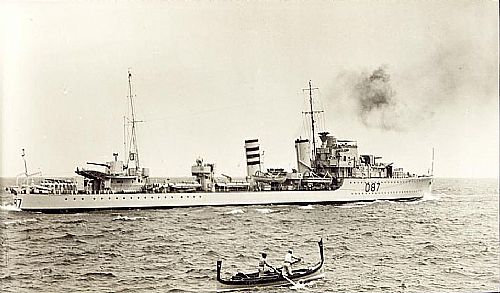
HMS Isis
The 11th also saw the British send ships closer into shore. Reports of a German merchantman off Trondheimsfjord prompted the dispatch of destroyers Ilex and Isis inshore. They didn't find the merchantman, but Isis did discover that the guns at Brettingen were operational. Fortunately, the German gunners weren't very good with their new artillery and she escaped unharmed, but the presence of the fortifications in German hands was enough to convince the British to focus on retaking Narvik, and Home Fleet turned north. On the 12th, the Germans in Trondheim found a stock of fuel oil, and Eckhold and Heinemann departed for Germany on the 14th. Jacobi, suffering from engine problems developed during the trip to Trondheim, and Riedel both needed work before they could return. Both ships lost torpedo tubes to strengthen the defenses in Trondheim.
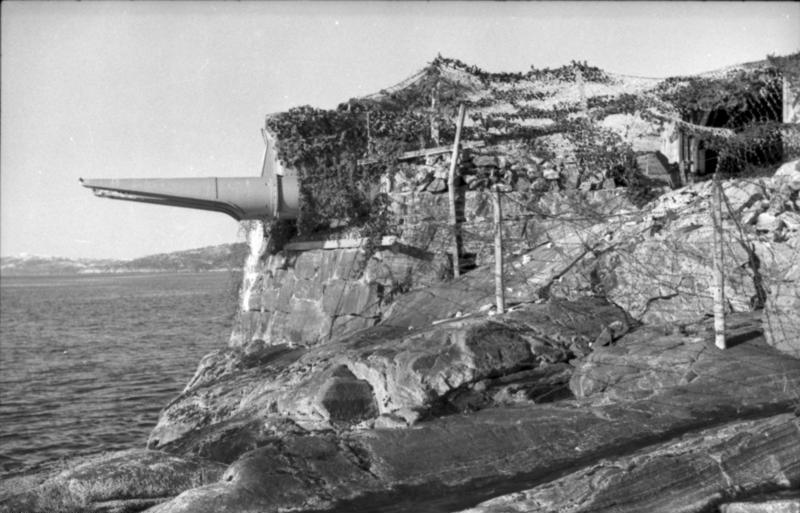
Torpedo tubes from Jacobi guard Trondheim
Only one German target was further north than Trondheim, and it was the city that had started all of this: Narvik. The ice-free port for Swedish iron ore would be the site of the greatest clashes between German and Allied forces in Norway, and it is there we will pick up our story next time.

Comments
Some typos:
"equipped with a total of 4 21 cm and 7 15 m guns"
"it turned out to be in bad ship when they were finally driven off."
Also: "port for Swedish iron ore would be the sight of the greatest clashes"
Fixed. Sorry, been under the weather and didn't run it past the usual review.
What an absolute disaster. Were the planners realistically weighing the importance of the iron ore against the potential losses?
"Site" is right.
@Echo
I am confused as to which side's planners you are talking about: B, G, or N?
I want to live in a world with 15 meter diameter shells.
(That might say more about my current mental state than I intended; oh well)
Don't know if I've mentioned it before, but I'm watching a Norwegian TV show called Occupied about Norway dealing with a Russian occupation of the country and muddling their way through it. It is both of fascinating current interest and also fascinating to look at it through the thoughts of remembering the country had to deal with an occupation within living memory.
Sorry, what was the collision with Glowworm? Was that covered in an earlier chapter?
@Doctorpat
All the way back in Part 2. I'm rather tied to the structure of the book The German Invasion of Norway, because the alternative is to try to understand the whole thing at once. This caused some issues in an earlier part when I missed a cruiser being sunk by a submarine late on the 9th. That said, I will edit in a link.